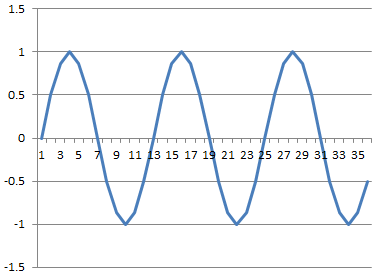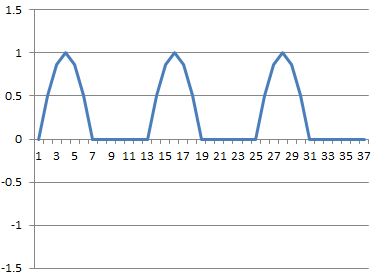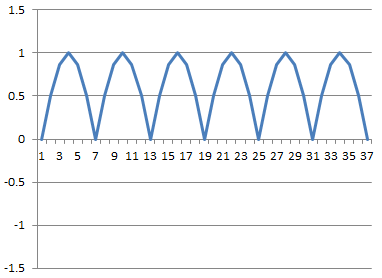Sometime last year I gave a basic introduction to the diode, now I'm going to look at networks of diodes and how they are used for half wave and full wave rectification of signals.
First we'll start with the half wave rectified.
The half wave rectifier is just a diode, this just blocks and therefore chops off the negative part of the power source signal effectively leaving humps with gaps between them.
A full wave rectifier is a little more difficult to understand, what you see is a network of resistors in a diamond shape.
When the top rail of the AC signal is in it's positive half cycle the Positive voltage flows through the diode to the circuit, just like the half wave rectifier.
now when the top rail of the AC signal is in it's negative half cycle, the bottom rail is in a positive half cycle, (which is why we have a diode coming from the bottom rail to the positive rail of the circuit.
Clearly the positive rails is now positive, but if the negative rail is directly connected to the AC source it's going to make the negative/earth rail positive too, so the potential difference between the positive and negative rails would be zero.
For this reason we also have a diode to make sure that the negative rail of the circuit does not go positive.
Now when the same AC wave is fed into this full wave rectifier we see that there are still positive humps, but these are a lot closer together.





No comments:
Post a Comment